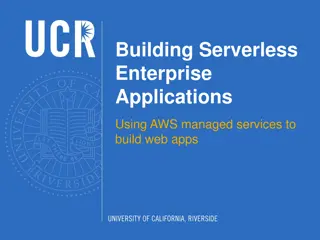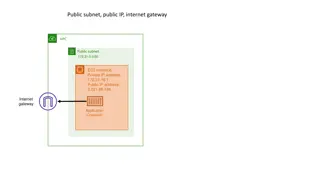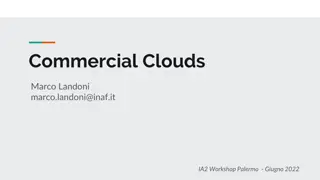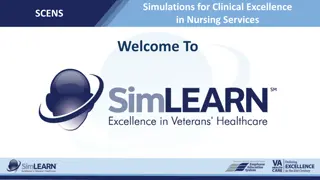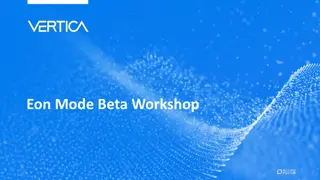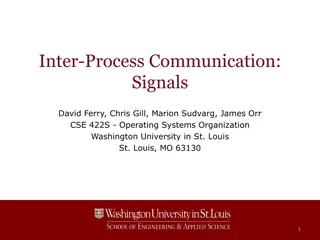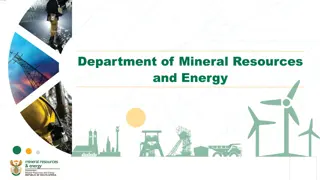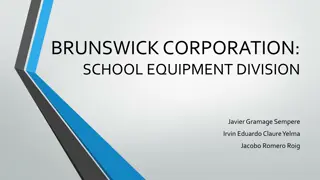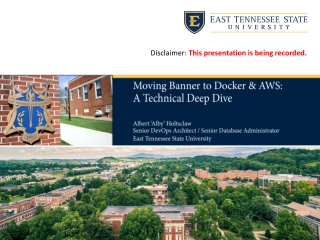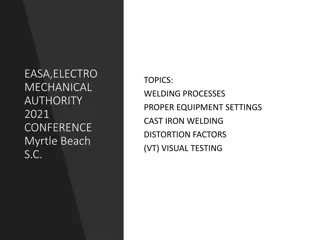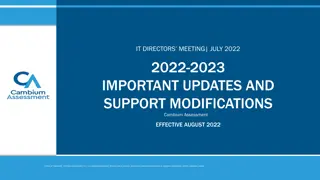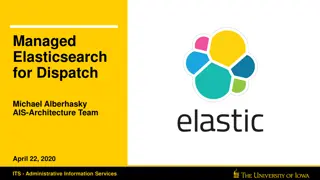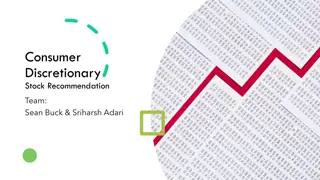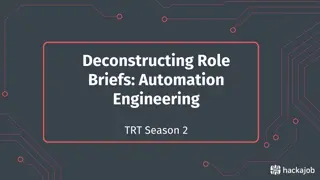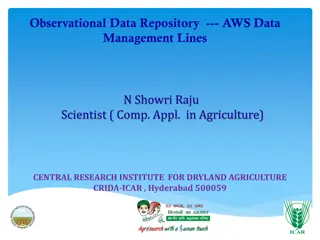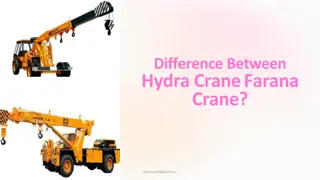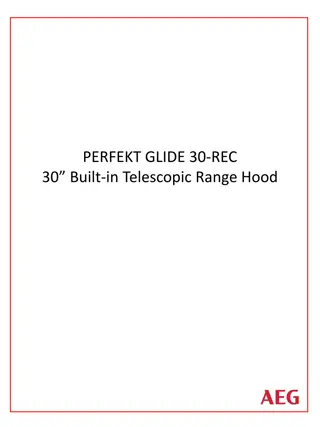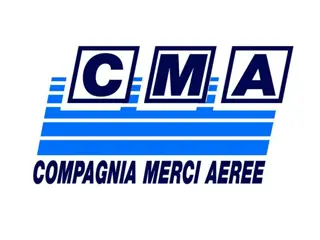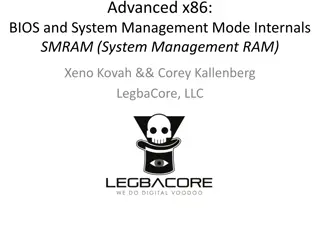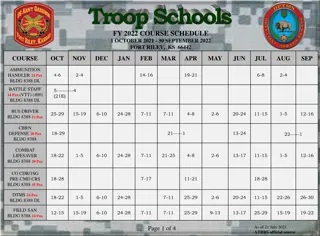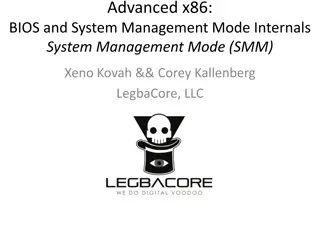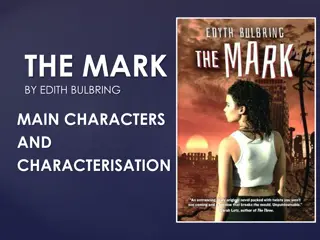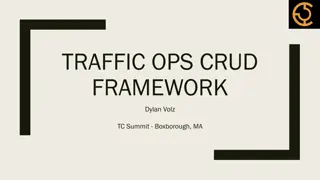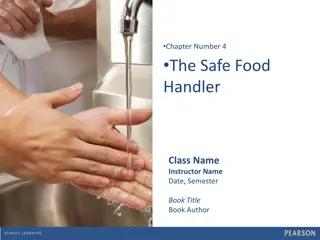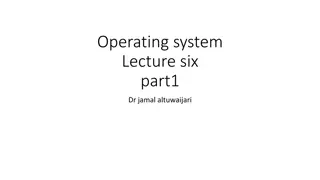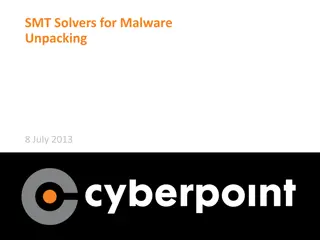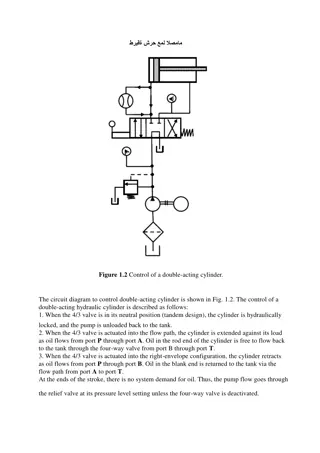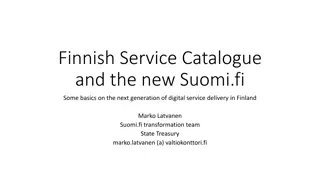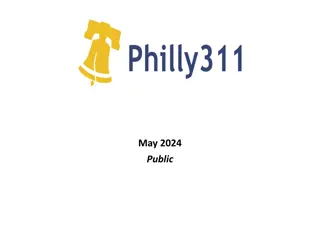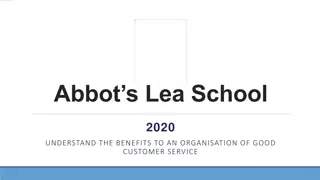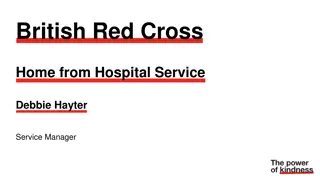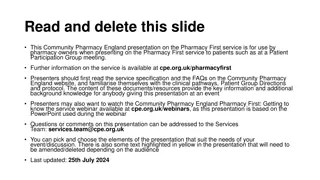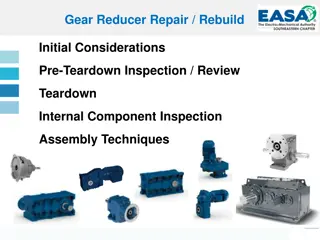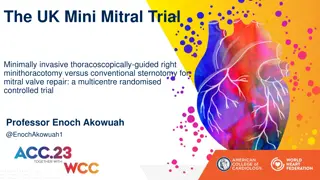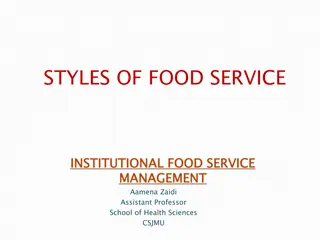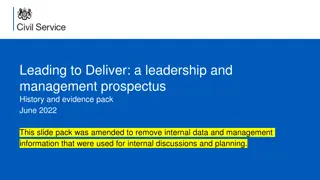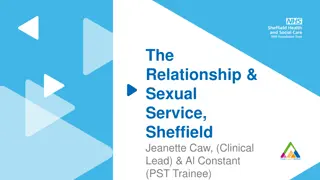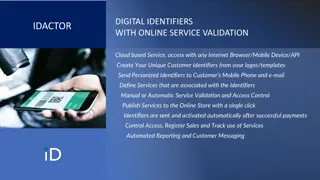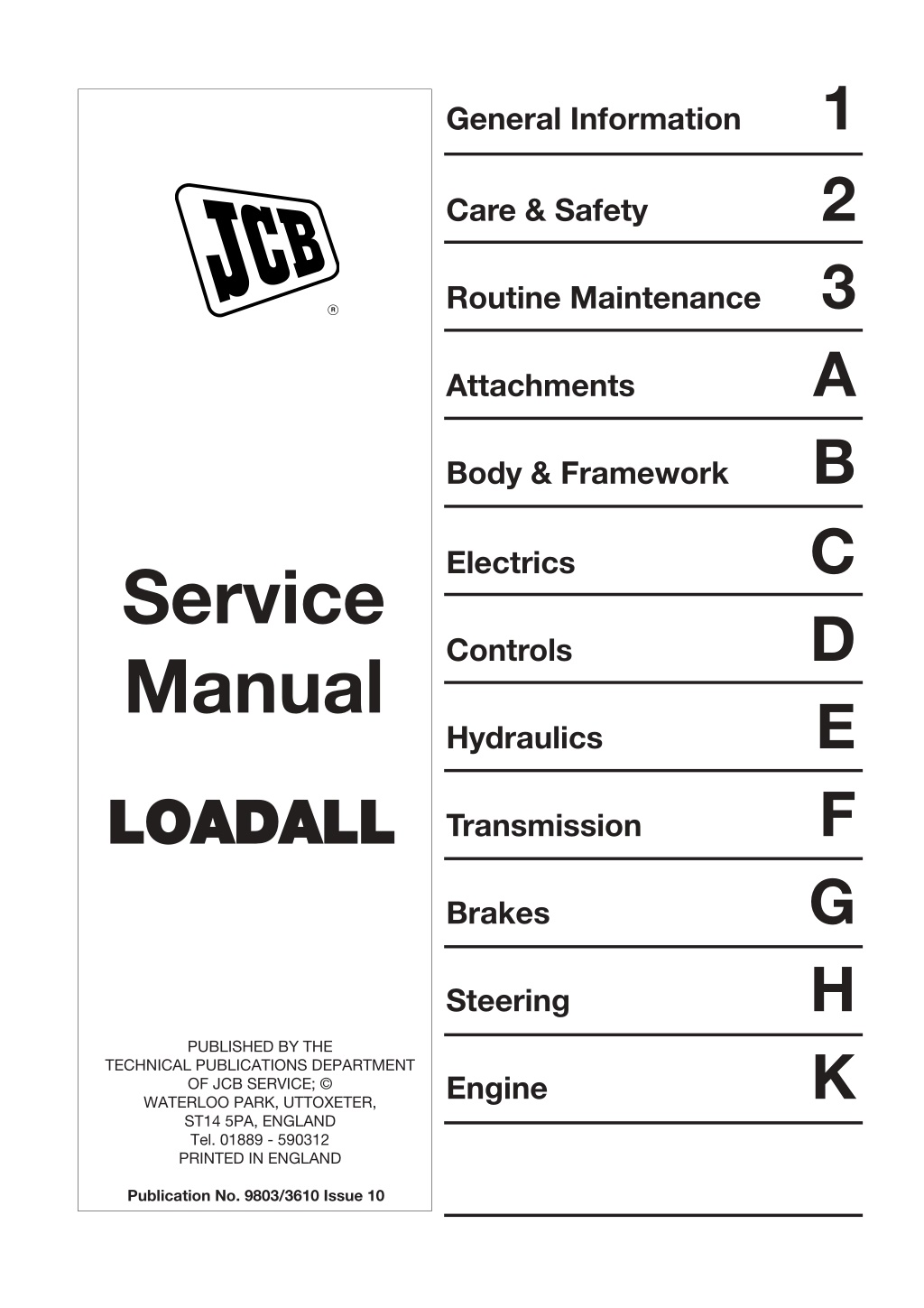
JCB 520-55 RS, 520-55 AWS, 526-55, 526-55 AWS, 526S AWS Telescopic Handler Service Repair Manual Instant Download
Please open the website below to get the complete manualnn//
Download Presentation

Please find below an Image/Link to download the presentation.
The content on the website is provided AS IS for your information and personal use only. It may not be sold, licensed, or shared on other websites without obtaining consent from the author. Download presentation by click this link. If you encounter any issues during the download, it is possible that the publisher has removed the file from their server.
E N D
Presentation Transcript
1 2 3 A B C D E F G H K General Information Care & Safety Routine Maintenance R Attachments Body & Framework Electrics Service Manual Controls Hydraulics L LO OA AD DA AL LL L Transmission Brakes Steering PUBLISHED BY THE TECHNICAL PUBLICATIONS DEPARTMENT OF JCB SERVICE; WATERLOO PARK, UTTOXETER, ST14 5PA, ENGLAND Tel. 01889 - 590312 PRINTED IN ENGLAND Engine Publication No. 9803/3610 Issue 10
Introduction This publication is designed for the benefit of JCB Distributor Service Engineers who are receiving, or have received, training by JCB International Training Centre. These personnel should have a sound knowledge of workshop practice, safety procedures, and general techniques associated with the maintenance and repair of hydraulic earthmoving equipment. Renewal of oil seals, gaskets, etc., and any component showing obvious signs of wear or damage is expected as a matter of course. It is expected that components will be cleaned and lubricated where appropriate, and that any opened hose or pipe connections will be blanked to prevent excessive loss of hydraulic fluid and ingress of dirt. Finally, please remember above all else SAFETY MUST COME FIRST! How to use this manual The manual is compiled in sections, the first three are numbered and contain information as follows: 1 2 3 General Information - includes torque settings and service tools. Care & Safety - includes warnings and cautions pertinent to aspects of workshop procedures etc. Routine Maintenance - includes service schedules and recommended lubricants for all the machine. = = = The remaining sections are alphabetically coded and deal with Dismantling, Overhaul etc. of specific components, for example: A B Attachments Body & Framework = = ...etc. The page numbering in each alphabetically coded section is not continuous. This allows for the insertion of new items in later issues of the manual. Section contents, technical data, circuit descriptions, operation descriptions etc are inserted at the beginning of each alphabetically coded section. READ the section contents to locate machine types, machine type identification IS NOT listed on individual pages. All sections are listed on the title page; tabbed divider cards align directly with individual sections on the front cover for rapid reference. Where a torque setting is given as a single figure it may be varied by plus or minus 3%. Torque figures indicated are for dry threads, hence for lubricated threads may be reduced by one third. 'Left Hand' and 'Right Hand' are as viewed from the rear of the machine facing forwards. * This Service Manual covers the following machines, from Serial Number 277001 520-55 RS (Rear Steering) Farm Special & Construction 520-55 AWS (All Wheel Steering) Farm Special & Construction 526-55 Farm Special & Construction 526-55 AWS (All Wheel Steering) Farm Special & Construction 526S AWS (All Wheel Steering) Farm Special & Construction 9803/3695 Issue 5*
Machine History Date Machine Description 1993 520-55 RS (277001 - 279114) The machine incorporated twin brake pedals to operate an independent brake circuit controlling each of the front wheels. This allowed single wheel braking to reduce the turning circle. The pedals could be locked together for road use. The machine was also equipped with manually selectable 2/4-wheel drive. Serial No. 277001 Machine introduction The machine was fitted with permanent four wheel steering and four-wheel braking. 1994 520-55 AWS (504B N.Am) (277386 - 278966) Serial No. 277386 Machine introduction 278610 JCB axles, drop box and 4 wheel power brakes fitted. 1994 526-55 (277467 - 278966) Introduced as a development of the 520- 55 with a stronger inner boom and larger lift, tilt and displacement rams. The machine was fitted manufactured axles and drop box, and incorporated four-wheel power brakes. The machine was equipped with three manually selectable steering modes and an optional turbo-charged engine was available. Serial No. 277468 with JCB Machine introduction 1996 520 & 526 520 (278967 onwards) 526 (278967 - 279567) 520-55 and 526-55 machines re-named 520 and 526. incorporated a revised hydraulic tank, plastic fuel tank, fenders and engine cover. These machines Serial No. 278967 Machine introduction 1996 526, 526S (526 Am.N) (279289 onwards) The 526 and 526S machine incorporated a longer wheelbase to allow for 24in. wheels and tyres on the 526S machine only. Serial No. 279289 Machine introduction 280300 ECU controlled powershift available as an option. Single lever control and trailer braking. Power brakes replaced by inboard, front axle brakes. Drop box fitted with helical gears from axle serial number 453/275/00005. 280577 ECU control was replaced by relay controlled transmission. 1996 520S (279598 onwards) Introduced as a 90 hp turbo-charged engine version of the 520 machine. The stronger inner boom on the 526 was introduced to cope with the increased engine power. Serial No. 279598 Machine introduction 9803/3630 Issue 1
https://www.ebooklibonline.com Hello dear friend! Thank you very much for reading. Enter the link into your browser. The full manual is available for immediate download. https://www.ebooklibonline.com
General Information Section 1 Section 1 i i Contents Page No. Identification 1 - 1 Torque Settings 2 - 1 Service Tools - Numerical List - Section B - Section C - Section E - Section F - Section H - Section K 3 - 1 3 - 3 4 - 1 5 - 1 6 - 1 7 - 1 7 - 1 * Sealing and Retaining Compounds 8 - 1 9803/3610 Issue 2*
General Information Section 1 Section 1 1 - 1 1 - 1 Unit Identification Identification Plate * The engine serial number is stamped on label W which is fastened to the right side of the cylinder block at Y, near the fuel filter. Explanation of Engine Identification Number Your machine has an identification plate V mounted as shown. The serial numbers of the machine and its major units are stamped on the plate. W V V Y Z Typical Engine Identification Number S195340 AA 50261 U 500405 P A B C D E Explanation of Vehicle Identification Number (VIN) A Engine Type: A series * SLP52655RE0277001 A B C D AA = 4 cylinder naturally aspirated AB = 4 cylinder turbo AK = 4 cylinder turbo - low emission, stage 1 AR = 4 cylinder naturally aspirated - low emission, stage 1 R Series RE = 4 cylinder naturally aspirated, low emission, stage 2 RG = 4 cylinder turbo, low emission stage 2 E A B C World Manufacturer Identification Machine Model Year of Manufacture P = 1993 R = 1994 S = 1995 T = 1996 Manufacturing Location Machine Serial Number SLP = JCB 526-55 S 1 = 2001 2 = 2002 3 = 2003 4 = 2004 E = England 0277001 V = 1997 W = 1998 X = 1999 Y = 2000 B Build Number D E C Country of Manufacture Machine Model Explanation D Engine Serial Number 526 - 55 F G E Year of Manufacture H If service information or parts are required, the complete engine number should be quoted. F 500 Series machine range G 2.6 tonnes lift capacity H 5.5 meters lift height If there is also a number marked TPL No , this should be quoted also. With the introduction of the longer wheel base machine the lift height has been deleted from the serial number. If a short engine has been fitted in service, two engine serial numbers and a TPL No. are stamped on the serial number plate as at Z. All the numbers should be quoted when requiring parts or information. 526 F G F 500 Series machine range G 2.6 tonnes lift capacity Note: Where the procedures in this service manual differ according to engine types, the text and/or illustrations will specify which engine types apply. Transmission and axle identification is shown on the next page. 9803/3610 Issue 4*
General Information Section 1 Section 1 1 - 2 1 - 2 Y Y S088470 X X S196280 Z Z S196290 The Syncro Shuttle serial number is stamped on label Y as shown. The rear axle serial number is stamped on plate X as shown. The front axle serial number is stamped on plate Z as shown. 9803/3610 Issue 2
Section 1 Section 1 General Information 2 - 1 2 - 1 Torque Settings Use only where no torque setting is specified in the text. Values are for dry threads and may be within three per cent of the figures stated. For lubricated threads the values should be REDUCED by one third. UNF Grade 'S' Bolts Bolt Size in 1/4 5/16 3/8 7/16 1/2 9/16 5/8 3/4 7/8 1 11/4 11/2 Hexagon (A/F) in 7/16 1/2 9/16 5/8 3/4 13/16 15/16 11/8 15/16 11/2 17/8 21/4 Torque Settings kgf m 1.4 2.8 5.0 8.0 12.0 17.3 24.3 41.5 66.3 99.0 198.0 345.0 (mm) (6.3) (7.9) (9.5) (11.1) (12.7) (14.3) (15.9) (19.0) (22.2) (25.4) (31.7) (38.1) Nm 14 28 49 78 117 170 238 407 650 970 1940 3390 lbf ft 10 20 36 58 87 125 175 300 480 715 1430 2500 * Metric Grade 8.8 Bolts Bolt Size Hexagon (A/F) mm Torque Settings kgf m (mm) Nm lbf ft M5 M6 M8 M10 M12 M16 M20 M24 M30 M36 (5) (6) (8) (10) (12) (16) (20) (24) (30) (36) 8 10 13 17 19 24 30 36 46 55 7 12 28 56 98 244 476 822 1633 2854 0.7 1.2 3.0 5.7 10 25 48 84 166 291 5 9 21 42 72 180 352 607 1205 2105 Rivet Nut Bolts/Screws Bolt Size Torque Settings (for steel rivet nuts) Nm kgf m 1.2 0.12 3.0 0.3 6.0 0.6 10.0 1.0 24.0 2.5 48.0 4.9 82.0 8.4 (mm) (3) (4) (5) (6) (8) (10) (12) lbf ft 0.9 2.0 4.5 7.5 18.0 35.5 60.5 M3 M4 M5 M6 M8 M10 M12 Note: All bolts used on JCB machines are high tensile and must not be replaced by bolts of a lesser tensile specification. 9803/3610 Issue 2*
General Information Section 1 Section 1 8 - 1 8 - 1 Sealing and Retaining Compounds * JCB Multi-Gasket A medium strength sealant suitable for all sizes of gasket flanges, and for hydraulic fittings of 25-65mm diameter. 4102/1212 50ml JCB High Strength Threadlocker A high strength locking fluid for use with threaded components. Gasketing for all sizes of flange where the strength of the joint is important. 4102/0551 50ml JCB Retainer (High Strength) For all retaining parts which are unlikely to be dismantled. 4101/0651 50ml JCB Threadlocker and Sealer A high strength locking fluid for sealing and retaining nuts, bolts, and screws up to 50mm diameter, and for hydraulic fittings up to 25mm diameter. 4101/0250 4101/0251 10ml 50ml Threadseal A medium strength thread sealing compound. 4102/1951 50ml Threadlocker A locking fluid for use on threads larger than 50mm dia. 4101/0451 50ml Activator A cleaning primer which speeds the curing rate of anaerobic products. (200ml) 4104/0251 4104/0253 (1ltr) Bottle Cleaner / Degreaser For degreasing components prior to use of anaerobic adhesives and sealants. 4104/1557 400ml Direct Glazing Kit For one pane of glass, comprises items marked below plus applicator nozzle etc. 993/55700 Ultra Fast Adhesive For direct glazing 4103/2109 310 ml Active Wipe 205 For direct glazing 4104/1206 4104/1203 30 ml 250 g Black Primer 206J For direct glazing 4201/4906 30 ml Clear Silicone Sealant To seal butt jointed glass 4102/0933 Black Polyurethane Sealant To finish exposed edges of laminated glass 4102/2309 310 ml JCB Cleaner & Degreaser For degreasing components prior to use of anaerobic adhesives and sealants. 4104/1538 Aerosol 9803/3610 Issue 6*
Section 2 Care & Safety Section 2 i i Contents Page No. Safety Notices 1 - 1 General safety 2 - 1 Operating safety 2 - 2 Maintenance safety 2 - 3 Lubricants - Health and Safety 3 - 1 9803/3610 Issue 1
Section 2 Care & Safety Section 2 1 - 1 1 - 1 Safety Notices In this handbook and on the machine there are safety notices. Each notice starts with a signal word. The signal word meanings are given below. ! DANGER Denotes an extreme hazard exists. If proper precautions are not taken it is highly probable that the operator (or others) could be killed or seriously injured. INT-1-2-1 ! WARNING Denotes a hazard exists. If proper precautions are not taken, the operator (or others) could be killed or seriously injured. INT-1-2-2 ! CAUTION Denotes a reminder of safety practices. Failure to follow these safety practices could result in injury to the operator (or others) and possible damage to the machine. INT-1-2-3 9803/3610 Issue 1
Section 2 Care & Safety Section 2 2 - 1 2 - 1 All construction and agricultural equipment can be hazardous. When a J CB machine is correctly operated and properly maintained, it is a safe machine to work with. But when it is carelessly operated or poorly maintained it can become a danger to you (the operator) and others. As well as the warnings in this chapter, specific warnings are given throughout the book. This section is designed to give a safety code for use of the machine generally and for maintenance practices. Do not work with the machine until you are sure that you can control it. Do not start any job until you are sure that you and those around you will be safe. If you are unsure of anything, about the machine or the job, ask someone who knows. Do not assume anything. Remember BE CAREFUL BE ALERT BE SAFE GEN-1-6 ! WARNING Care and Alertness ! General Safety ! WARNING Decals ! All the time you are working with or on the machine, take care and stay alert. Always be careful. Always be alert for hazards. INT-1-3-5 ! You can be injured if you do not obey the decal safety instructions. Keep decals clean. Replace unreadable or missing decals with new ones before operating the machine. Make sure replacement parts include warning decals where necessary. INT-1-3-4 ! ! WARNING Raised Boom A raised boom can fall or be lowered accidentally. Do not walk under a raised boom which is not fitted with a safety strut, or you could be injured. 5-1-1-1 ! ! WARNING Clothing You can be injured if you do not wear proper clothing. Loose clothing can get caught in the machinery. Wear protective clothing to suit the job. Examples of protective clothing are: a hard hat, safety shoes, safety glasses, a well-fitting overall, ear-protectors and industrial gloves. Keep cuffs fastened. Do not wear a necktie or scarf. Keep long hair restrained. INT-1-3-6 ! WARNING Lifting Equipment You can be injured if you use faulty lifting equipment. Make sure that lifting equipment is in good condition. Make sure that lifting tackle complies with all local regulations and is suitable for the job. Make sure the lifting equipment is strong enough for the job. INT-1-3-7 9803/3610 Issue 1
Section 2 Care & Safety Section 2 2 - 2 2 - 2 ! WARNING Engine Panels Operating Safety ! WARNING Controls The engine has exposed rotating parts. Do not open the bonnet while the engine is running. Keep other people clear while you raise the engine cover using the boom. Do not use the machine with the bonnet open or the cover raised. 5-1-2-1 ! WARNING ROPS/FOPS Structure The machine is fitted with a Roll Over Protection Structure (ROPS) and a Falling Objects Protection Structure (FOPS). You could be killed or seriously injured if you operate the machine with a damaged or missing ROPS/FOPS. If the ROPS/FOPS has been in an accident, do not use the machine until the structure has been renewed. Modifications and repairs that are not approved by the manufacturer may be dangerous and will invalidate the ROPS /FOPS certification INT-2-1-9/3 ! WARNING Reversing Reversing at high speed can cause accidents. Do not reverse in third or fourth (if fitted) gear with full throttle. Always drive at a safe speed to suit working conditions. INT-2-2-9 ! WARNING Communications Bad communications can cause accidents. Keep people around you informed of what you will be doing. If you will be working with other people, make sure any hand signals that may be used are understood by everybody. Work sites can be noisy, do not rely on spoken commands. INT-2-2-3 ! WARNING Sparks Explosions and fire can be caused by sparks from the exhaust or the electrical system. Do not use the machine in closed areas where there is flammable material, vapour or dust. INT-2-2-10 ! CAUTION Overhead Clearance A raised boom can strike overhead objects. Always check for overhead clearance before raising the boom. 5-1-5-1 You or others can be killed or seriously injured if you operate the control levers from outside the cab. Operate the control levers only when you are correctly seated inside the cab. INT-2-1-3 ! WARNING Entering/Leaving Always face the machine when entering and leaving the cab. Use the step(s) and handrails. Make sure the step(s), handrails and your boot soles are clean and dry. Do not jump from the machine. Do not use the machine controls as handholds, use the handrails. INT-2-1-7 ! WARNING Passengers Passengers in or on the machine can cause accidents. The J C B Loadall is a one man machine. Do not carry passengers. INT-2-2-2 ! WARNING Exhaust Gases Breathing the machine exhaust gases can harm and possibly kill you. Do not operate the machine in closed spaces without making sure there is good ventilation. If possible, fit an exhaust extension. If you begin to feel drowsy, stop the machine at once. Get out of the cab into fresh air. INT-2-1-10 ! WARNING Ramps and Trailers Water, mud, ice, grease and oil on ramps or trailers can cause serious accidents. Make sure ramps and trailers are clean before driving onto them. Use extreme caution when driving onto ramps and trailers. INT-2-2-6 ! WARNING Fires If your machine is equipped with a fire extinguisher, make sure it is checked regularly. Keep it in the operator's cab until you need to use it. Do not use water to put out a machine fire, you could spread an oil fire or get a shock from an electrical fire. Use carbon dioxide, dry chemical or foam extinguishers. Contact your nearest fire department as quickly as possible. Firefighters should use self-contained breathing apparatus INT-3-2-7/1 9803/3610 Issue 1
Section 2 Care & Safety Section 2 2 - 3 2 - 3 Maintenance Safety ! WARNING Metal Splinters ! ! WARNING J acking ! You can be injured by flying metal splinters when driving metal pins in or out. Use a soft-faced hammer or drift to remove and fit metal pins. Always wear safety glasses. INT-3-1-3 ! A machine can roll off jacks and crush you unless the wheels have been chocked. Always chock the wheels at the opposite end of the machine that is to be jacked. Do not work underneath a machine supported only by jacks. Always support a jacked-up machine on axle stands before working underneath it. INT-3-2-8 ! ! WARNING Boom Safety Strut ! WARNING Diesel Fuel A raised boom can drop suddenly and cause serious injury. Before working under a raised boom, fit the boom safety strut. See Boom Safety Strut (MAINTENANCE section). 5-1-5-7 ! Diesel fuel is flammable; keep naked flames away from the machine. Do not smoke while refuelling the machine or working on the engine. Do not refuel with the engine running. There could be a fire and injury if you do not follow these precautions. INT-3-2-2 ! ! WARNING Communications Bad communictions can cause accidents. If two or more people are working on the machine, make sure each is aware of what the others are doing. Before starting the engine make sure the others are clear of danger areas; examples of danger areas are: the rotating blades and belt on the engine, the attachments and linkages, and anywhere beneath or behind the machine. People can be killed or injured if these precautions are not taken. INT-3-1-5 ! ! WARNING Hot Coolant The cooling system is pressurised when the engine is hot. Hot coolant can spray out when you remove the radiator cap. Let the system cool before removing the radiator cap. To remove the cap; turn it to the first notch and let the system pressure escape, then remove the cap. INT-3-2-9 ! ! WARNING Asbestos ! WARNING Petrol Asbestos dust can damage your lungs. Some engine gaskets contain asbestos. Do not dismantle the engine or exhaust system; get these jobs done by a qualified person who has a copy of the engine service manual. 5-1-6-1 ! Do not use petrol in this machine. Do not mix petrol with the diesel fuel; in storage tanks the petrol will rise to the top and form flammable vapours. INT-3-1-6 ! ! WARNING Battery Gases ! WARNING Oil Batteries give off explosive gases. Keep flames and sparks away from the battery. Do not smoke close to the battery. Make sure there is good ventilation in closed areas where batteries are being used or charged. Do not check the battery charge by shorting the terminals with metal; use a hydrometer or voltmeter. INT-3-1-8 ! Oil is toxic. If you swallow any oil, do not induce vomiting, seek medical advice. Used engine oil contains harmful contaminants which can cause skin cancer. Do not handle used engine oil more than necessary. Always use barrier cream or wear gloves to prevent skin contact. Wash skin contaminated with oil thoroughly in warm soapy water. Do not use petrol, diesel fuel or paraffin to clean your skin. INT-3-2-3 ! ! DANGER Electrolyte ! WARNING Electrical Circuits Battery electrolyte is toxic and corrosive. Do not breathe the gases given off by the battery. Keep the electrolyte away from your clothes, skin, mouth and eyes. Wear safety glasses. See Battery (MAINTENANCE section) for First Aid treatments. INT-3-2-1/2 Understand the electrical circuit before connecting or disconnecting an electrical component. A wrong connection can cause injury and/or damage. INT-3-1-4 9803/3610 Issue 1
Section 2 Care & Safety Section 2 2 - 4 2 - 4 ! WARNING Battery Terminals ! ! ! WARNING Hydraulic Fluid The machine is negatively earthed. Always connect the negative pole of the battery to earth. Fine jets of hydraulic fluid at high pressure can penetrate the skin. Do not use your fingers to check for hydraulic fluid leaks. Do not put your face close to suspected leaks. Hold a piece of cardboard close to suspected leaks and then inspect the cardboard for signs of hydraulic fluid. If hydraulic fluid penetrates your skin, get medical help immediately. INT-3-1-10/1 ! When connecting the battery, connect the earth (-) lead last. When disconnecting the battery, disconnect the earth (-) lead first. INT-3-1-9 ! ! WARNING Hydraulic Pressure ! WARNING Fluoroelastomeric Materials Hydraulic fluid at system pressure can injure you. Before disconnecting or connecting hydraulic hoses, stop the engine and operate the controls to release pressure trapped in the hoses. Make sure the engine cannot be started while the hoses are open. INT-3-1-11/1 Certain seals and gaskets (e.g. crankshaft oil seal) on J CB machines contain fluoroelastomeric materials such as Viton, Fluorel and Technoflon. Fluoroelastomeric materials subjected to high temperatures can produce highly corrosive hydrofluoric acid. THIS ACID CAN SEVERELY BURN. * New fluoroelastomeric components at ambient temperature require no special safety precautions. ! ! WARNING Battery Used fluoroelastomeric components whose temperatures have not exceeded 300 C require no special safety precautions. If evidence of decomposition (e.g. charring) is found, refer to the next paragraph for safety instructions DO NOT TOUCH COMPONENT OR SURROUNDING AREA. A battery with frozen electrolyte can explode if it is used or charged. Do not use a machine with a frozen battery. To help prevent the battery from freezing, keep the battery fully charged. INT-3-1-7 ! Used fluoroelastomeric components subjected to temperatures greater than 300 C (e.g. engine fire) must be treated using the following safety procedure. Make sure that heavy duty gloves and special safety glasses are worn: ! CAUTION Cleaning Cleaning metal parts with incorrect solvents can cause corrosion. Use only recommended cleaning agents and solvents. INT-3-2-11 ! 1 Ensure that components have cooled then remove and place material into plastic bags. ! CAUTION 'O' rings, Seals and Gaskets 2 Thoroughly wash contaminated area with 10% calcium hydroxide or other suitable alkali solution, if necessary use wire wool to remove burnt remains. Badly fitted, damaged or rotted 'O' rings, seals and gaskets can cause leakages and possible accidents. Renew whenever disturbed unless otherwise instructed. Do not use Triochloroethane or paint thinners near 'O' rings and seals. INT-3-2-12 ! 3 Thoroughly wash contaminated area with detergent and water. 4 Contain all removed material, gloves etc. used in this operation in sealed plastic bags and dispose of in accordance with Local Authority Regulations. ! WARNING Soft Ground A machine can sink into soft ground. Never work under a machine on soft ground. INT-3-2-4 ! DO NOT BURN FLUOROELASTOMERIC MATERIALS. If contamination of skin or eyes occurs, wash the affected area with a continuous supply of clean water or with calcium hydroxide solution for 15-60 minutes. Get medical attention immediately. INT - 3 - 3 - 5/1 ! WARNING Hydraulic Hoses Damaged hoses can cause fatal accidents. Inspect the hoses regularly for: Damaged end fittings Chafed outer covers Ballooned outer covers Kinked or crushed hoses Embedded armouring in outer covers Displaced end fittings. INT-3-3-2 9803/3610 Issue 2*
Section 2 Care & Safety Section 2 Lubricants - Health and Safety 3 - 1 3 - 1 Hygiene J CB lubricants are not a health risk when used properly for their intended purposes. 2 Apply a barrier cream to the skin before handling used engine oil. However, excessive or prolonged skin contact can remove the natural fats from your skin, causing dryness and irritation. 3 Note the following when removing engine oil from skin: a Wash your skin thoroughly with soap and water. b Using a nail brush will help. Low viscosity oils are more likely to do this, so take special care when handling used oils, which might be diluted with fuel contamination. c Use special hand cleansers to help clean dirty hands. Whenever you are handling oil products you should maintain good standards of care and personal and plant hygiene. For details of these precautions we advise you to read the relevant publications issued by your local health authority, plus the following. d washing. Never use petrol, diesel fuel, or paraffin for e Avoid skin contact with oil soaked clothing. f Don't keep oily rags in pockets. Storage g Wash dirty clothing before re-use. Always keep lubricants out of the reach of children. h Throw away oil-soaked shoes. Never store lubricants in open or unlabelled containers. First Aid - Oil Waste Disposal Eyes All waste products should be disposed of in accordance with all the relevant regulations. In the case of eye contact, flush with water for 15 minutes. If irritation persists, get medical attention. The collection and disposal of used engine oil should be in accordance with any local regulations. Never pour used engine oil into sewers, drains or on the ground. Swallowing If oil is swallowed do not induce vomiting. Get medical advice. Handling Skin New Oil In the case of excessive skin contact, wash with soap and water. There are no special precautions needed for the handling or use of new oil, beside the normal care and hygiene practices. Spillage Used Oil Absorb on sand or a locally approved brand of absorbent granules. Scrape up and remove to a chemical disposal area. Used engine crankcase lubricants contain harmful contaminants. Fires Here are precautions to protect your health when handling used engine oil: Extinguish with carbon dioxide, dry chemical or foam extinguishers. Do not use water. Fire-fighters should use self-contained breathing apparatus. 1 Avoid prolonged, excessive or repeated skin contact with used engine oils. 9803/3610 Issue 1
Routine Maintenance Section 3 Section 3 i i Contents Page No. Lubricants and Capacities - New Engines - Lubrication Charts - 520-55 (Rear Steer) Machines - 520-55 AWS Machines (Type AA and AB Engine Builds) - 526-55, 526, 526S Machines (AA and AB Engine Builds) - 520-55 AWS Machines - Low Emission Engines (Type AR and AK Engine Builds) - 526-55, 526 & 526S Machines Low Emission Engines (Type AR and AK Engine Builds) - 526-55, 526 & 526S Machines Low Emission Engines (Type RE and RG Engine Builds) * 1 - 1 1 - 1 1 - 2 1 - 3 1 - 4 1 - 5 1 - 6 1 - 7 Machine Safety 2 - 1 Service Schedules 3 - 1 Grease - 50 Hours - 500 Hours - 1000 Hours 4 - 1 4 - 2 4 - 4 Oiling 5 - 1 Tyres and Wheels 6 - 1 Foot Brake (520-55 machines only) 7 - 1 Engine Air Filter - Cleaning the Pre-Cleaner - Changing the Outer Element - Changing the Inner Element 7 - 1 7 - 2 7 - 3 Engine Oil and Filter - Checking the Oil level - Changing the Oil and Filter 8 - 1 8 - 1 Engine Cooling System - Checking the Coolant Level - Coolant Mixtures - Changing the Coolant 9 - 1 9 - 1 9 - 2 Cab Heater Filter 10 - 1 9803/3610 Issue 6*
Routine Maintenance Section 3 Section 3 ii ii Contents Page No. Fuel System - Fuel Types - Filling the Tank - Cleaning the Lift Pump Gauze - Draining the Filter (up to S/N 280299) - Changing the Filter Element (up to S/N 280299) - Draining the Filter (from S/N 280300) - Changing the Filter Element A series engines (from S/N 280300) R series engines - Draining the Sediment Bowl - Cleaning the Sediment Bowl - Bleed the System - Fuel Pipes- Removal and Replacement 11 - 1 11 - 2 11 - 2 11 - 3 11 - 3 11 - 4 11 - 4 11 - 5 11 - 6 11 - 6 11 - 8 11 - 11 Fire Extinguisher 12 - 1 Syncro Shuttle Transmission - Checking the Oil Level - Changing the Oil and Filter 12 - 1 12 - 2 Front and Rear Axle - Checking the Axle Oil Level - Changing the Axle Oil 13 - 1 13 - 1 Front and Rear Hub - Checking the Hub Oil Levels - Oil Immersed Brakes - Changing the Hub Oil 14 - 1 14 - 1 14 - 1 Hydraulic System - Checking the Fluid Level - Changing the Filter Element 15 - 1 15 - 1 Hose Burst Protection Valves - Checking the Hose Burst Protection Valves 16 - 1 Battery 17 - 1 9803/3610 Issue 3*
Section 3 Routine Maintenance Section 3 Lubricants & Capacities 1 - 1 1 - 1 New Engines New engines DO NOT require a running-in period. The engine/machine should be used in a normal work cycle immediately; glazing of the piston cylinder bores, resulting in excessive oil consumption, could occur if the engine is gently run-in. Under no circumstances should the engine be allowed to idle for extended periods; (e.g. warming up without load). Engines of new machines are filled at the factory with J CB 10W/30 Multigrade oil. This oil should be drained after the first 100 hours operation and the engine filled with the appropriate recommended grade as shown in the lubrication chart. J CB 10W/30 Multigrade should also be used for the first 100 hours operation whenever a new or reconditioned engine is fitted to the machine. After the first 100 hours operation, it is essential that the 10W/30 oil is replaced by the lubricant recommended in the lubrication charts. Lubrication Charts Lubrication charts are included on the following pages for all machine models. Note that there are some differences in specifications for machines operating in North America. Be sure you identify the machine and its lubricant requirements correctly. Note 1: This is nominal machine capacity. The total hydraulic system capacity depends on the equipment being used. Fill and check with all rams closed. Watch level sight glass when filling. Note 2: If J CB Special MPL Grease is used, all 50 hour greasing operations must be carried out at TEN (10) HOUR intervals. All 500 hour greasing operations must be carried out at FIFTY (50) HOUR intervals 9803/3610 Issue 5*
Section 3 Routine Maintenance Section 3 1 - 2 1 - 2 Lubricants & Capacities 520-55 RS (Rear Steer) Machines ITEM CAPACITY UK Gal US Gal FLUID/LUBRICANT INTERNATIONAL SPECIFICATION Litres Fuel Tank Up to serial No. 279000 From serial No. 279001 120 160 26.4 35.2 31.7 42.2 Diesel Oil (See Types of Fuel) ASTM D975-66T Nos. 1D, 2D Engine (Oil) 10 2.2 J CB High Performance Engine Oil -10 C to 50 C (14 F to 122 F) SAE15W/40 API CF4/SG (ACEA E2:B2:A2) J CB Super Universal Agricultural -15 C to 30 C (5 F to 86 F) SAE10W/30 API CD/SF J CB Torque Converter Fluid -18 C to 0 C (0 F to 32 F) SAE10W API CD/SF NORTH AMERICA J CB 15W/40 Engine Oil 14 F to 122 F (-10 C to 50 C) 2.6 SAE 15W/40 API CF4/SG J CB 10W Engine Oil -4 F to 50 F (-20 C to 10 C) SAE 10W API CF4/SG Engine (Coolant) 55% Antifreeze 20 11 4.4 2.4 J CB Four Seasons Antifreeze And Summer Coolant Starts to freeze -36 C (-33 F) ASTM D3306-74 NORTH AMERICA Permanent Antifreeze Starts to freeze -33 F (-36 C) 5.3 2.9 ASTM D3306-74 Syncro Shuttle Transmission 17 3.7 4.5 J CB High Performance Transmission Fluid J CB: 4000/0900 Friction modified oils MUST NOT be used (eg Dexron ATF type). Front Axle Housing Hubs (x2) J CB High performance Gear Oil Plus J CB: 4000/2200 MUST be suitable for use with oil immersed brakes and limited slip differentials (LSD). 9.7 0.6 2.1 0.1 2.5 0.16 Rear Axle Housing Hubs (x2) 5.0 1.5 1.1 0.3 1.3 0.4 Hydraulic Tank (1) Up to serial No. 279000 From serial No. 279001 J CB High Performance Hydraulic Fluid 46 (Above 38 C, 100 F) J CB High Performance Hydraulic Fluid 32 (Below 38 C, 100 F) J CB Light Hydraulic Fluid ISO VG46 100 110 22.0 24.2 ISO VG32 ISO VG15 Up to serial No. 279000 From serial No. 279001 26.4 29.0 NORTH AMERICA (All Machines) J CB Hydraulic Fluid ISO VG46 Grease Points (2) J CB HP Grease Lithium complex NLGI No. 2 constsituency including extreme pressure additives. Lithium based NLGI No. 2 constsituency including extreme pressure additives. J CB Special MPL-EP Grease Wear Pad Runways J CB Waxoyl Boom Hoses J CB Special Slide Lubricant 9803/3610 Issue 4*
Section 3 Routine Maintenance Section 3 Lubricants & Capacities 1 - 3 1 - 3 520-55 AWS Machines (Type AA and AB Engine Builds) ITEM CAPACITY UK Gal US Gal FLUID/LUBRICANT INTERNATIONAL SPECIFICATION Litres Fuel Tank Up to serial No. 279000 From serial No. 279001 120 160 26.4 35.2 31.7 42.2 Diesel Oil (See Types of Fuel) ASTM D975-66T Nos. 1D, 2D Engine (Oil) 10 2.2 J CB High Performance Engine Oil -10 C to 50 C (14 F to 122 F) SAE15W/40 API CF4/SG (ACEA E2:B2:A2) J CB Super Universal Agricultural -15 C to 30 C (5 F to 86 F) SAE10W/30 API CD/SF J CB Torque Converter Fluid -18 C to 0 C (0 F to 32 F) SAE10W API CD/SF NORTH AMERICA J CB 15W/40 Engine Oil 14 F to 122 F (-10 C to 50 C) 2.6 SAE 15W/40 API CF4/SG J CB 10W Engine Oil -4 F to 50 F (-20 C to 10 C) SAE 10W API CF4/SG Engine (Coolant) 55% Antifreeze 20 11 4.4 2.4 J CB Four Seasons Antifreeze And Summer Coolant Starts to freeze -36 C (-33 F) ASTM D3306-74 NORTH AMERICA Permanent Antifreeze Starts to freeze -33 F (-36 C) 5.3 2.9 ASTM D3306-74 Syncro Shuttle Transmission 17 3.7 4.5 J CB High Performance Transmission Fluid J CB: 4000/0900 Friction modified oils MUST NOT be used (eg Dexron ATF type). Front Axle Housing Hubs (x2) J CB High performance Gear Oil Plus J CB: 4000/2200 MUST be suitable for use with oil immersed brakes and limited slip differentials (LSD). 5.5 1.5 1.2 0.3 1.4 0.4 Rear Axle Housing Hubs (x2) 5.0 1.5 1.1 0.3 1.3 0.4 Hydraulic Tank (1) Up to serial No. 279000 From serial No. 279001 J CB High Performance Hydraulic Fluid 46 (Above 38 C, 100 F) J CB High Performance Hydraulic Fluid 32 (Below 38 C, 100 F) J CB Light Hydraulic Fluid ISO VG46 100 110 22.0 24.2 ISO VG32 ISO VG15 Up to serial No. 279000 From serial No. 279001 26.4 29.0 NORTH AMERICA (All Machines) J CB Hydraulic Fluid ISO VG46 Grease Points (2) J CB HP Grease Lithium complex NLGI No. 2 constsituency including extreme pressure additives. Lithium based NLGI No. 2 constsituency including extreme pressure additives. J CB Special MPL-EP Grease Wear Pad Runways J CB Waxoyl Boom Hoses J CB Special Slide Lubricant 9803/3610 Issue 4*
Suggest: If the above button click is invalid. Please download this document first, and then click the above link to download the complete manual. Thank you so much for reading
Section 3 Routine Maintenance Section 3 Lubricants & Capacities 1 - 4 1 - 4 526-55, 526 & 526S Machines (AA and AB Engine Builds) ITEM CAPACITY UK Gal US Gal FLUID/LUBRICANT INTERNATIONAL SPECIFICATION Litres Fuel Tank Up to serial No. 279000 From serial No. 279001 120 160 26.4 35.2 31.7 42.2 Diesel Oil (See Types of Fuel) ASTM D975-66T Nos. 1D, 2D Engine (Oil) 10 2.2 J CB High Performance Engine Oil -10 C to 50 C (14 F to 122 F) SAE15W/40 API CF4/SG (ACEA E2:B2:A2) J CB Super Universal Agricultural -15 C to 30 C (5 F to 86 F) SAE10W/30 API CD/SF J CB Torque Converter Fluid -18 C to 0 C (0 F to 32 F) SAE10W API CD/SF NORTH AMERICA J CB 15W/40 Engine Oil 14 F to 122 F (-10 C to 50 C) 2.6 SAE 15W/40 API CF4/SG J CB 10W Engine Oil -4 F to 50 F (-20 C to 10 C) SAE 10W API CF4/SG Engine (Coolant) 55% Antifreeze 20 11 4.4 2.4 J CB Four Seasons Antifreeze And Summer Coolant Starts to freeze -36 C (-33 F) ASTM D3306-74 NORTH AMERICA Permanent Antifreeze Starts to freeze -33 F (-36 C) ASTM D3306-74 5.3 2.9 Syncro Shuttle Transmission 17 3.7 4.5 J CB High Performance Transmission Fluid J CB 4000/0900 Friction modified oils MUST NOT be used (eg Dexron ATF type). Front Axle Housing Hubs (x2) J CB High performance Gear Oil Plus J CB 4000/2200 MUST be suitable for use with oil immersed brakes and limited slip differentials (LSD). 9 2 1.98 0.44 2.4 0.5 Rear Axle Housing Hubs (x2) 8.4 2 1.85 0.44 2.2 0.5 Brake System From serial No. 280300 J CB Light Hydraulic Fluid Do not use ordinary brake fluid ISO VG15 Hydraulic Tank (1) Up to serial No. 279000 From serial No. 279001 J CB High Performance Hydraulic Fluid 46 (Above 38 C, 100 F) J CB High Performance Hydraulic Fluid 32 (Below 38 C, 100 F) J CB Light Hydraulic Fluid ISO VG46 100 110 22.0 24.2 ISO VG32 ISO VG15 Up to serial No. 279000 From serial No. 279001 26.1 29.0 NORTH AMERICA (All Machines) J CB Hydraulic Fluid ISO VG46 Grease Points (2) J CB HP Grease Lithium complex NLGI No. 2 constsituency including extreme pressure additives. Lithium based NLGI No. 2 constsituency including extreme pressure additives. J CB Special MPL-EP Grease Wear Pad Runways J CB Waxoyl Boom Hoses J CB Special Slide Lubricant 9803/3610 Issue 3*
https://www.ebooklibonline.com Hello dear friend! Thank you very much for reading. Enter the link into your browser. The full manual is available for immediate download. https://www.ebooklibonline.com

